You want window treatments that are functional and stylish. But curtains can feel dated and offer limited control. Blinds offer a modern, versatile solution for any space or budget.
Blinds are popular because they offer superior control over light and privacy[^1], come in countless styles to match any decor, and provide significant energy savings[^2]. Their clean lines and functionality make them a timeless choice for modern living.
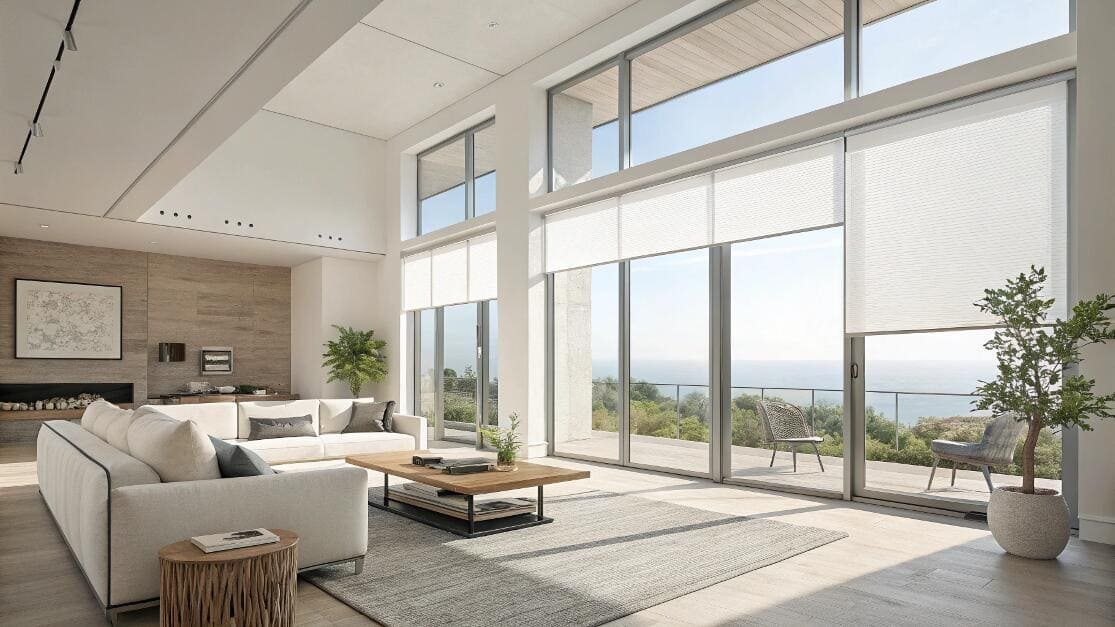
As someone who has helped project contractors source blinds for years, I see why they are the go-to choice for professionals like Emma. They solve so many problems at once. From aesthetics[^3] to energy bills, they simply perform. But with so many options, how do you know what's right for your project? Let's explore the key reasons behind their lasting appeal.
What is the current trend for blinds, and will they be in style in 2025?
Design trends change quickly. You don't want to invest in window treatments[^4] only to have them look dated in a few years. Blinds offer a timeless appeal that adapts.
The current trend is toward smart, motorized blinds and natural materials[^5] like wood and bamboo. These styles will absolutely be in style in 2025 because they blend technology, sustainability, and minimalist aesthetics—three pillars of modern design[^6].
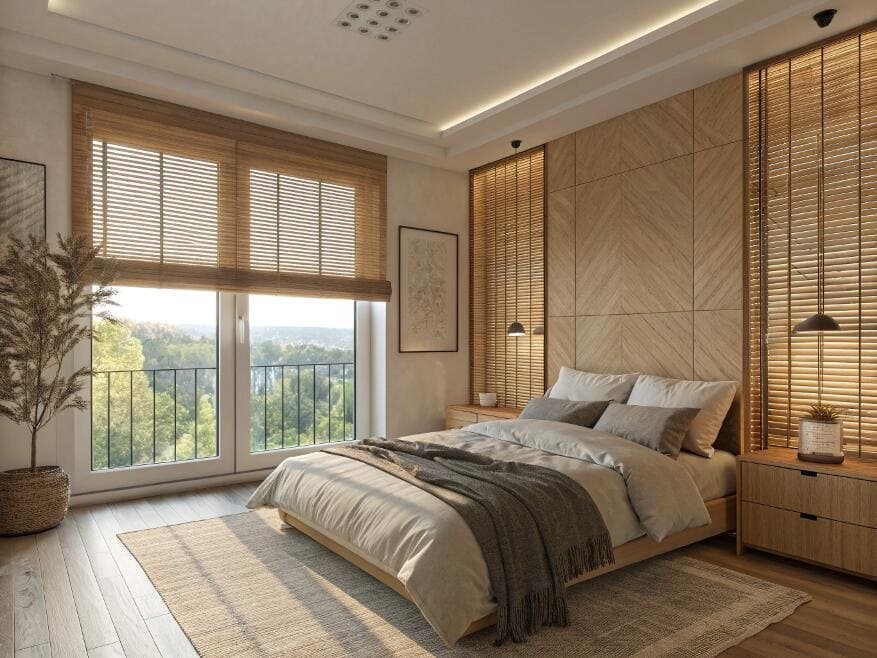
The biggest trend I see is the move towards "smart minimalism." Clients want clean lines and less clutter, which is why motorized roller shades[^7] and sleek Venetian blinds[^8] are so popular. Automation is no longer a luxury; it’s becoming a standard expectation in high-end projects. My partners often specify systems that integrate with smart home hubs. Materials are also key. Sustainable and natural textures are in high demand. Wood, faux wood, and bamboo add warmth and a connection to nature that contrasts beautifully with modern architecture. For 2025 and beyond, the focus will remain on products that are not only beautiful but also intelligent, safe, and eco-friendly. It’s less about a specific color and more about the fusion of form, function, and responsible design. This timeless approach ensures the blinds[^9] you specify today will look great for years to come.
How do blinds help cut energy bills in hot & cold seasons?
Energy costs are always rising, impacting both home budgets and commercial operating expenses. Your windows are a major source of energy loss[^10]. Blinds offer a simple, effective solution.
High-quality blinds create an insulating barrier. In summer, they reflect solar heat to keep rooms cooler. In winter, they trap heat inside, reducing heat loss. This leads to significant year-round savings on air conditioning and heating costs.
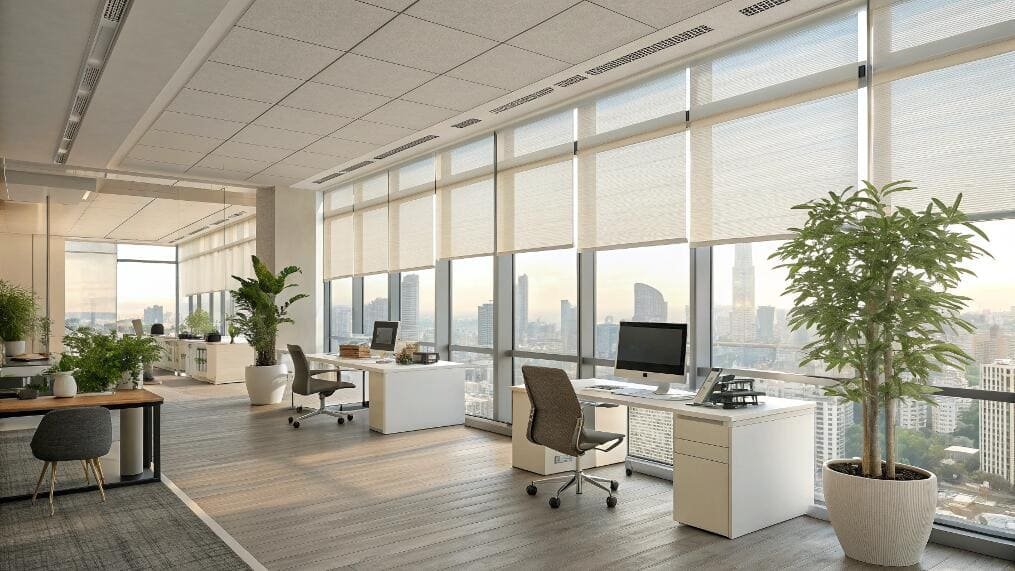
The energy-saving potential of blinds is often underestimated. It comes down to basic thermal dynamics. Windows can account for up to 30% of a building's heating and cooling energy loss. Cellular shades are a star performer here. Their honeycomb-shaped pockets trap air, creating a powerful insulating layer. On a hot day, a light-colored cellular shade can reduce solar heat gain through a window by up to 80%. In the winter, that same shade can cut heat loss by 40% or more. For commercial projects, this translates directly into lower HVAC operating costs. Even standard Venetian blinds, when closed, can significantly reduce heat gain. When I work with contractors, I provide them with the performance data for our products so they can show their clients the long-term return on investment. It's not just a window covering; it’s an upgrade to the building's thermal performance.
Which blind styles give the best balance of privacy and view-through?
You want natural light in your space, but you also need privacy from the outside world. Curtains are either open or closed. Blinds offer a much more flexible approach.
Venetian blinds (wood, faux-wood, or aluminum) offer the best balance. You can precisely tilt the slats to let in daylight and maintain a view while simultaneously blocking a direct line of sight from the outside.
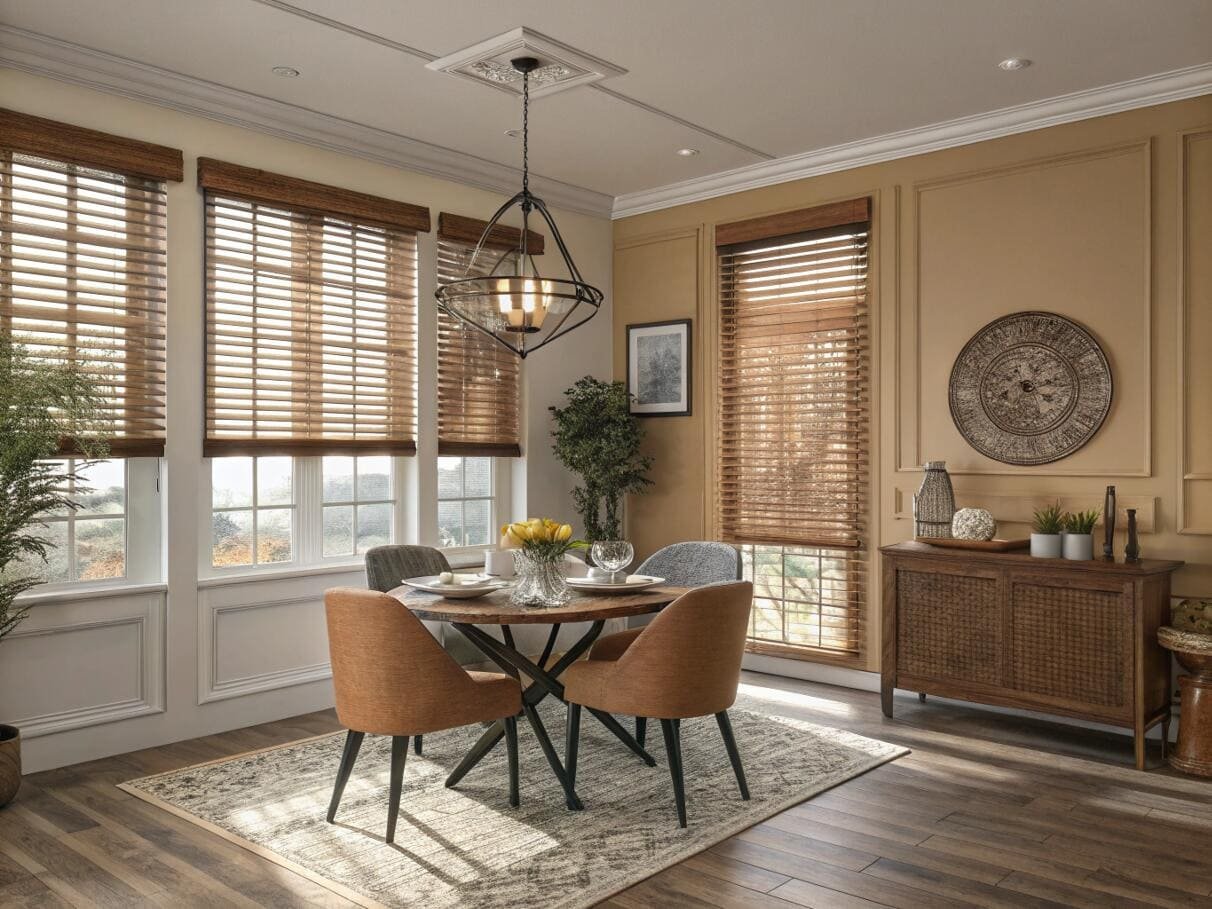
This is a classic dilemma for designers: light versus privacy. Venetian blinds are the original, and still one of the best, solutions. The ability to angle the slats gives you complete control. You can direct light up toward the ceiling to brighten a room without causing glare on screens, all while preventing passersby from looking in. Another excellent option is solar shades, especially for commercial offices. These are roller shades made from a special woven fabric. You can choose the "openness factor," which determines how much you can see through them. A 3% openness factor, for example, will block 97% of UV rays and significantly cut glare, but you still get to keep your view of the outside. It’s perfect for maintaining a connection to the outdoors without compromising on comfort or privacy during the day.
Cordless vs. corded: what does the latest child-safety regulation[^11] say?
Exposed cords on window coverings are a serious safety hazard for children and pets. As a project specifier, you carry liability. Following safety standards is not optional.
In the US, the latest safety standard (ANSI/WCMA A100.1) requires that most stock window coverings be cordless or have inaccessible cords. The CPSC strongly recommends custom-ordered products also be cordless in homes with young children.
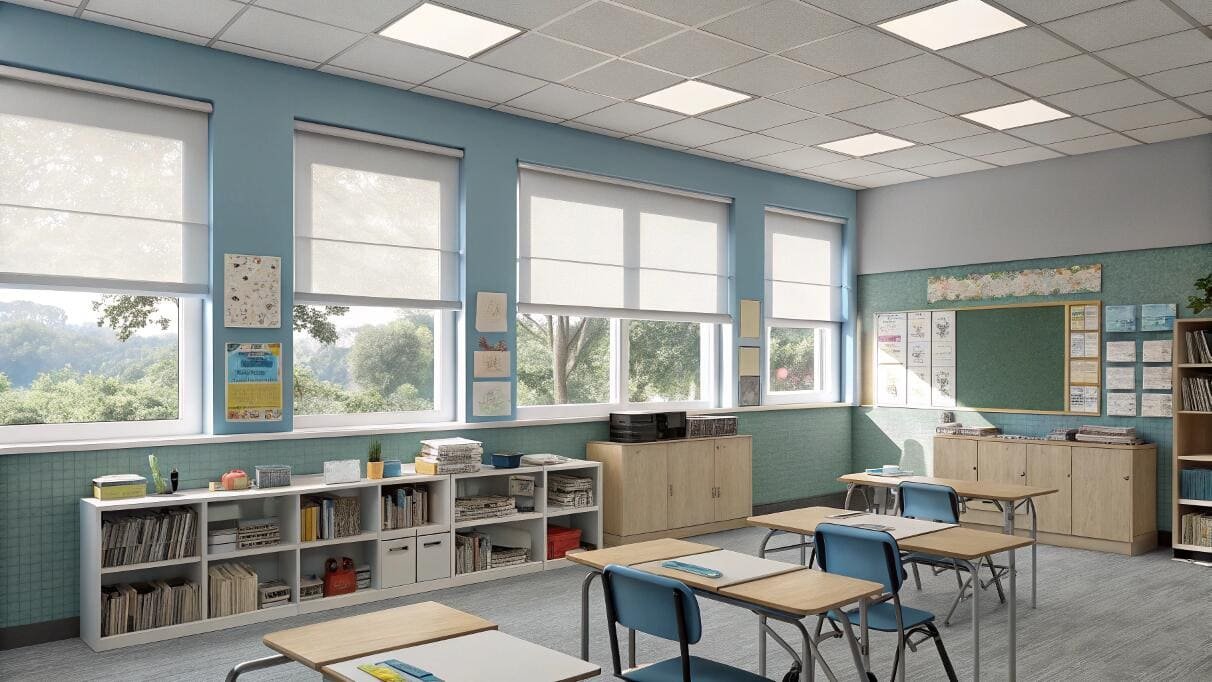
This is an area I'm very passionate about. Safety must always come first. The regulations have become much stricter in recent years, and for good reason. The industry has moved decisively toward cordless solutions. For my clients like Emma, specifying cordless is now the default for any residential project. It removes the risk entirely. The options are better than ever. We have cordless lift systems for cellular shades[^12], where you just push or pull the bottom rail. For roller shades, a gentle tug releases a spring mechanism. And of course, motorization is the ultimate cordless solution. By making cordless the standard, you not only comply with the latest safety recommendations but also provide your clients with a cleaner, more modern look. It's a win-win: safer for families and aesthetically superior.
Ready-made vs. made-to-measure: where is the real cost saving?
You need to deliver a project on time and on budget. Ready-made blinds seem cheap and fast, but do they really save money? The answer often surprises people.
Ready-made blinds have a lower upfront price. The real cost saving from made-to-measure[^13] comes from a perfect fit, which eliminates installation problems[^14], rework, light gaps, and operational issues[^15], saving significant time and labor costs on the project.
Ready-made blinds are fine for standard window sizes and quick DIY projects. But in a professional context, the "savings" can quickly disappear. I've seen it happen: a contractor buys stock blinds to save a few dollars, but they don't fit perfectly. The installer spends extra hours making adjustments, the gaps look unprofessional, and the client is unhappy. Labor costs go up, and the project's reputation goes down. Made-to-measure blinds are manufactured to the exact 1/8-inch specification of each window. This guarantees a perfect fit the first time. The installation is faster and cleaner. There are no awkward gaps or operational failures. For a project with many windows, the efficiency gained in labor far outweighs the higher initial product cost. For a professional buyer, time is money, and a perfect fit saves time.
Which materials suit each décor style?
Choosing the right material is key to making blinds feel like a natural part of the design. The wrong material can clash with the room's aesthetic. Here's a quick guide.
Use wood or bamboo blinds for warm, natural, or mid-century modern styles. Faux-wood works great in high-humidity areas. Aluminum Venetian blinds are perfect for minimalist, industrial, or office interiors.
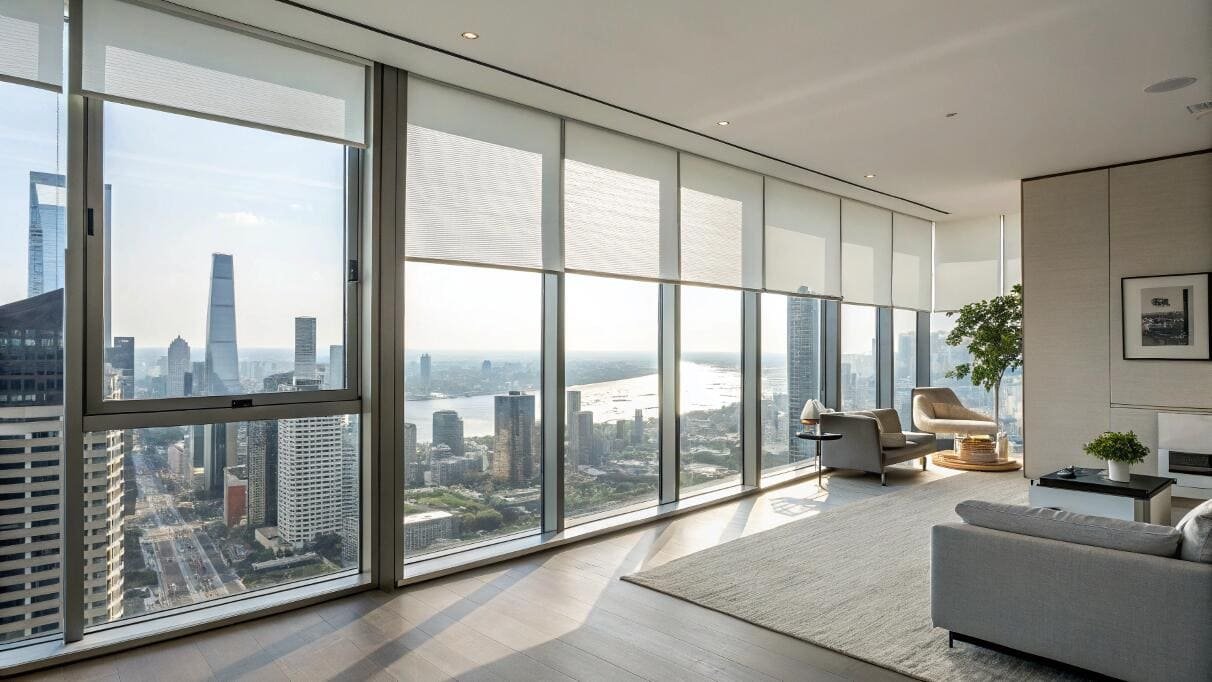
Matching the blind material to the decor is what separates a good design from a great one. It's about creating a cohesive look. I always discuss this with my design partners to ensure the product complements their vision. Here’s a simple breakdown I use:
| Material | Best For Décor Style(s) | Key Benefit |
|---|---|---|
| Real Wood | Mid-Century Modern, Traditional, Rustic | Natural warmth, classic elegance |
| Faux Wood | Modern Farmhouse, Transitional | Durability, moisture-resistant |
| Aluminum | Minimalist, Industrial, Commercial | Sleek lines, wide color selection |
| Bamboo/Woven | Bohemian, Coastal, Scandinavian | Organic texture, filtered light |
| Fabric (Roller/Cellular) | Contemporary, All-purpose | Softness, color variety, energy efficiency[^16] |
A sleek aluminum blind in a rustic farmhouse will look out of place. By thinking about the overall feeling of the space, choosing the right material becomes an intuitive process that enhances the final design.
Can smart motorized blinds[^17] boost property value and convenience?
Every developer wants to maximize their property's value. Smart home features are a major selling point. Do motorized blinds really add to the bottom line?
Yes. Smart motorized blinds are a high-impact upgrade that increases a property's convenience, energy efficiency, and modern appeal. They are seen as a luxury feature[^18] that boosts perceived value.
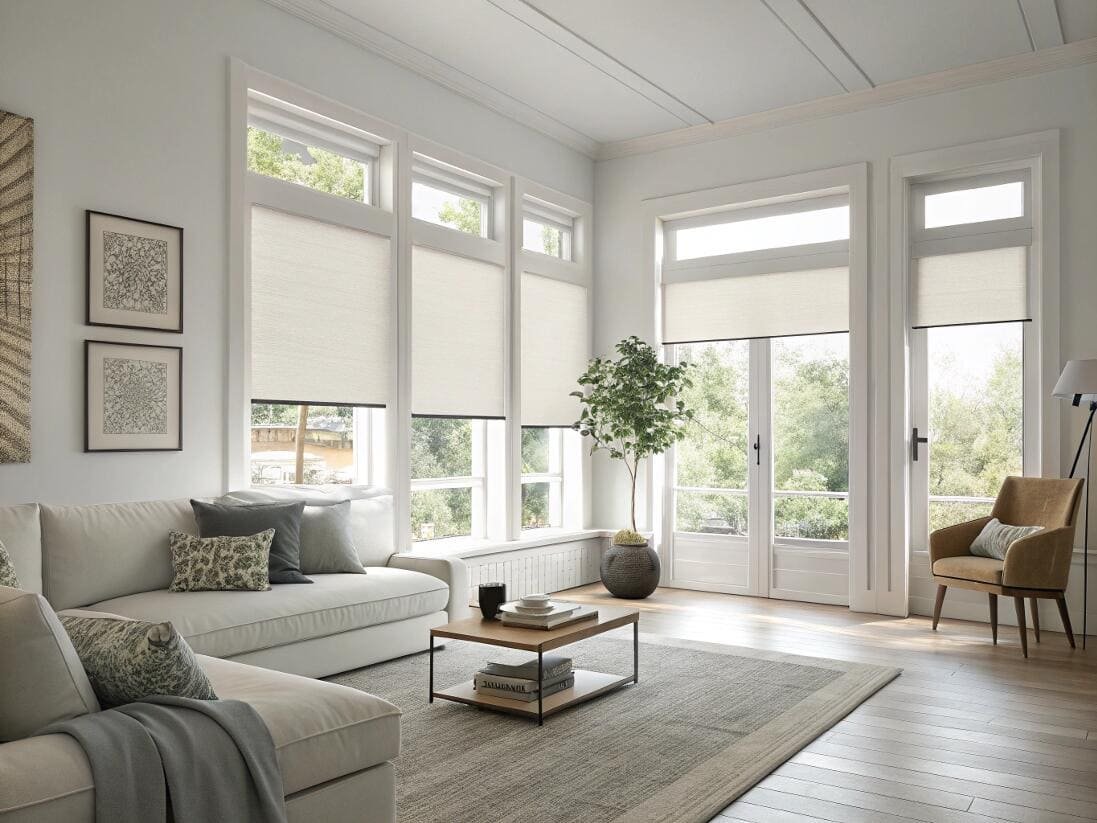
In today's market, "smart" sells. Homebuyers and commercial tenants are increasingly looking for integrated technology that makes life easier and more efficient. Motorized blinds are a very visible and impressive smart feature. Imagine a real estate agent demonstrating how all the shades in a penthouse apartment lower with a single tap on a phone. It's a powerful statement. Beyond the "wow" factor, there are practical benefits that buyers understand. The convenience of scheduling blinds to open and close automatically adds to security. The energy savings from automated adjustments are a tangible financial benefit. For developers, including smart shading as a standard feature is a way to position their property as premium and tech-forward. It's an investment that pays for itself in faster sales and higher valuations.
Conclusion
Blinds are popular because they uniquely combine style, function, and intelligent design. They are a timeless solution that adapts to modern needs for privacy, efficiency, and smart home integration.
---
[^1]: Learn how different blind styles can balance natural light and privacy effectively in your space.
[^2]: Find out how blinds can significantly reduce energy costs and improve thermal performance in your home.
[^3]: Learn how the right window treatments can enhance the overall look and feel of your space.
[^4]: Explore this link to discover a variety of stylish and functional window treatment options that suit contemporary designs.
[^5]: Explore the benefits of using natural materials like wood and bamboo in your window treatments for a sustainable choice.
[^6]: Explore the principles of modern design and how window treatments fit into this aesthetic.
[^7]: Discover the convenience and modern appeal of motorized roller shades for your home.
[^8]: Discover why Venetian blinds are a classic choice for controlling light and maintaining privacy.
[^9]: Learn why blinds are favored for their versatility, style, and energy efficiency in various settings.
[^10]: Understand the impact of windows on energy efficiency and how to mitigate losses with the right treatments.
[^11]: Stay informed about important safety standards to ensure your window treatments are safe for children and pets.
[^12]: Explore the unique design of cellular shades and their energy-saving benefits for your home.
[^13]: Learn how custom blinds can save time and money by ensuring a perfect fit for your windows.
[^14]: Explore common issues faced during blind installation and how to avoid them for a smoother process.
[^15]: Learn about potential operational challenges with blinds and how to ensure they function smoothly.
[^16]: Find out how the right window treatments can enhance your home's energy efficiency and comfort.
[^17]: Discover the advantages of integrating smart technology into your window treatments for convenience and efficiency.
[^18]: Discover the luxury features that can elevate your home, including smart blinds and other high-end upgrades.Partner with VelaBlinds for Your Next Project
Smart window treatments shouldn't be complicated. After working with 500+ distributors and contractors worldwide, I've streamlined the process to get you quality products, competitive pricing, and reliable support - every time.
Why project professionals choose VelaBlinds:
- ✅ Fast, Accurate Quotes - Detailed specs and pricing within 24 hours
- ✅ Transparent Pricing - No hidden fees, volume discounts clearly outlined
- ✅ Quality Assurance - Direct partnerships with certified OEM manufacturers
- ✅ Project Support - Dedicated account manager from quote to delivery
Start your next project:
📧 Quick Quote: Send your requirements to info@velablinds.com
📱 Direct Contact: WhatsApp +86 137 2012 8317
🌐 Browse Solutions: https://velablinds.com/
📁 Product Resources: Access spec sheets, catalogs & project files
Paul Chen, Founder
"I built VelaBlinds to solve the real challenges I faced as a project buyer - long lead times, unclear specs, and unreliable suppliers. Let's discuss how we can power your projects with smarter blinds."
Serving distributors and contractors across North America, Europe, and Australia since 2018.



